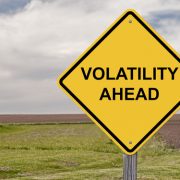Self-Directed Real Estate IRAs Can Help Close the Retirement Savings Gap
Most Americans know they really should be saving and investing for retirement. But most Americans are also clueless about how much they realistically need to have saved up in order to provide for a secure and acceptably comfortable retirement income. Self-Directed IRAs are just part of the retirement picture that also includes conventional assets, Roth IRAs, pensions, 401(K)s, 403(b)s, Thrift Savings Accounts (for federal employees), annuities and private savings outside of retirement accounts.
The problem is pervasive: A new study from Bankrate.com finds that more than 60 percent of Americans surveyed have no understanding of how much they need to save to accomplish their retirement goals. 69 percent of millennials between ages 18 and 67 do not know – which is excusable, considering their youth. But Baby Boomers didn’t fare much better: Fully 58 percent of Boomers are unable to calculate their required requirement savings or budgets. 56 percent of Generation Xers surveyed reported they didn’t know.
Other findings:
- 8 percent of those responding indicated they never plan to retire – though disability and economic dislocation have a way of taking those decisions out of individuals’ hands.
- 8 percent estimated they needed over $1 million to retire, and 15 percent estimated they would need to amass between $250,000 and $1 million.
- 8 percent reported they believed they would need $250,000 or less to retire.
- 61 percent reported they did not know. Which makes it impossible for them to make rational decisions about how much they need to save each week, month and year as their retirement dates march inexorably closer.
Self-Directed Real Estate IRAs can help
One way to close the gap: More Americans should consider Self-Directed IRAs – particularly Self-Directed Real Estate IRAs. The Self-Directed Real Estate IRA technique provides a number of powerful benefits that are not easily replicated using other types of asset classes:
- Tax-deferred growth of Self-Directed IRAs, Self-Directed Solo 401(K)s, Self-Directed SEP IRAs and Self-Directed SIMPLE IRAs
- Tax-free growth of Self-Directed Roth IRAs and Roth 401(K)s
- Protection from creditors in the event of bankruptcy
- Consistent rental income that can be reinvested or used to support you and your family in retirement
- Potential for increasing income over time as you are able to increase rents
- Potential for capital appreciation
- Easily obtainable leverage – lenders are generally more willing to lend on real estate than most other kinds of assets, and on better terms.
Few other types of investments provide this combination of benefits to the individual investor.
Fortunately, the Self-Directed IRA structure is flexible enough for investors to build quite significant real estate portfolios over time by leveraging the tax benefits of IRAs and other retirement accounts.
Real estate prices can be volatile, of course. But rental real estate tends to pay investors handsomely via rental incomes while they wait for prices to recover. You do not need to sell at a loss: You can continue to collect regular rental income from your Self-Directed Real Estate IRA investment property for years.
Self-Directed Real Estate IRA owners should be aware of unrelated debt-financed income tax: If you borrow money to purchase an investment property, part of your income and part of your capital gains on sale of a Self-Directed Real Estate IRA property will not be entirely tax-free. Any earnings and realized capital gains attributable to borrowed money, rather than your own savings and contributions, will generally be taxable as income, under UDIT rules. However, as you pay down the mortgage on the property, less and less of your income and capital gains will be taxable.
(Tip: Consider paying off any loans on Self-Directed Real Estate IRA properties, if possible, before selling them, to avoid having to pay UDIT on capital gains attributable to other peoples’ money.)
Another idea: Self-Directed Solo 401(K) accounts also support self-directed real estate investing. If you are self-employed or own your own business, you can establish your own 401(K) or Roth 401(K) and use it to purchase investment real estate directly.
However, Self-Directed IRAs and Self-Directed Solo 401(K)s are no panacea: In order to have the greatest chance of success, investors should have a clear idea of what their retirement income needs are, and what kind of savings it will take to amass an investment portfolio capable of generating the income required over many years of retirement.
Interested in learning more about Self-Directed IRAs? Contact American IRA, LLC at 866-7500-IRA (472) for a free consultation. Download our free guides or visit us online at www.AmericanIRA.com.







